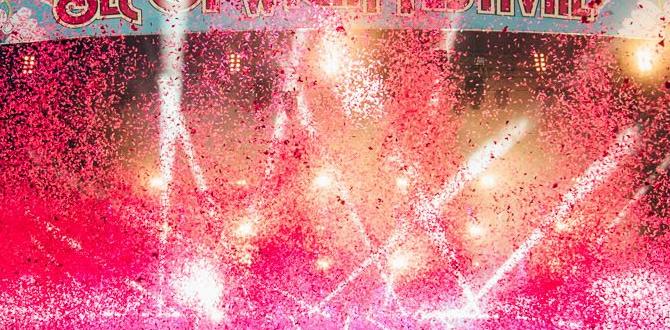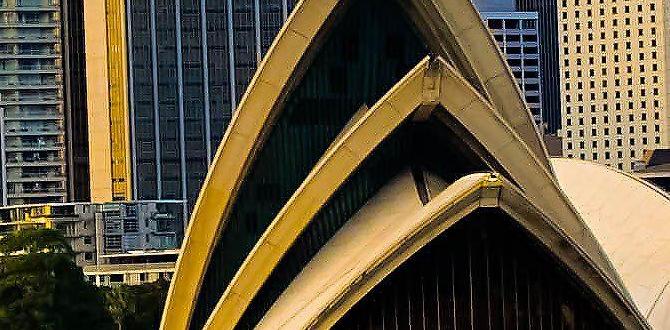For fewer crowds in Bangkok, aim for the shoulder seasons: April to June, and September to early November. These periods offer a pleasant balance of good weather and significantly fewer tourists than the peak season, making your exploration more relaxed and enjoyable.
Dreaming of exploring the vibrant streets of Bangkok, from its glittering temples to its delicious street food, without feeling like you’re in a constant rush? It’s a common desire for travelers! The city is undeniably popular, and sometimes, navigating through throngs of people can be a bit overwhelming.
But don’t worry, finding that sweet spot for a more peaceful visit is entirely possible. With a little smart planning, you can experience the magic of Bangkok at your own pace. This guide will walk you through the best times to visit to avoid the biggest crowds, ensuring a more serene and memorable adventure.
We’ll look at the weather patterns, local holidays, and the natural ebb and flow of tourism to pinpoint those ideal visiting windows. Get ready to discover how to enjoy Bangkok’s attractions with a little more breathing room!
Understanding Bangkok’s Climate and Tourist Seasons
To find the best time to visit Bangkok without the crowds, it’s crucial to first understand the city’s unique climate and how it influences tourism. Bangkok experiences a tropical monsoon climate, characterized by three distinct seasons: hot, rainy, and cool. Each season brings its own set of conditions, which in turn affect the number of tourists you’ll encounter.
The Hot Season (March to May)
This period is marked by soaring temperatures, often reaching well into the high 30s Celsius (over 100°F). Humidity is also at its peak. While the heat can be intense, it’s also a period when some parts of the world are experiencing their spring break, so you might see a moderate number of visitors. However, it’s generally less crowded than the cool season because the discomfort of the heat deters many.
The Rainy Season (June to October)
Don’t let the name “rainy season” fool you into thinking it’s non-stop downpours. The rain typically comes in short, heavy bursts, often in the afternoon or evening, followed by sunshine. This is officially the low season for tourism. You’ll find the fewest crowds during these months, and accommodation prices tend to be lower. The lush greenery of the city is at its most vibrant, offering a different, more tranquil perspective.
Key advantages of visiting during the rainy season include:
- Significantly fewer tourists at major attractions.
- Lower prices for flights and hotels.
- The city looks greener and more vibrant.
- Rain showers are often brief, allowing for plenty of sightseeing.
The Cool Season (November to February)
This is Bangkok’s peak tourist season, and for good reason. The weather is at its most pleasant, with lower humidity and comfortable temperatures, usually in the mid-20s to low 30s Celsius (70s-80s°F). This is when most Western countries have their winter breaks, and many travelers flock to Southeast Asia. Consequently, attractions, hotels, and transport can be very crowded, and prices are at their highest.
The Golden Window: Shoulder Seasons for Fewer Crowds
For those seeking a sweet spot between pleasant weather and manageable crowds, Bangkok’s shoulder seasons are your best bet. These are the periods that fall just before or after the peak season, offering a more relaxed experience.
Late Dry Season / Early Hot Season (April to June)
Following the primary cool season and leading into the full swing of the hot season, this period can be surprisingly excellent for crowd-averse travelers. While temperatures start to climb, they haven’t typically reached their oppressive August or September highs. Early April still benefits from good weather before the Songkran festival (Thai New Year) causes a massive surge in domestic and international travel for a week or so. After Songkran, the crowds thin out significantly, and you’ll find more availability and a less hurried atmosphere at popular spots.
Early Rainy Season / Transition to Cool Season (September to Early November)
This is arguably the prime time to visit Bangkok if you want to avoid the masses. September and October are the rainiest months, but as mentioned, showers are usually short-lived. By November, the rains begin to subside, and humidity drops, but the peak tourist crush hasn’t quite arrived yet. This window offers a fantastic combination of reasonable weather, lush scenery, and significantly fewer tourists than the winter months.
Consider this period for:
- Experiencing authentic local life without tourist bottlenecks.
- Enjoying popular temples like Wat Arun and Wat Pho with more peace.
- Finding better deals on boutique hotels and guesthouses.
- A more relaxed pace for exploring vibrant markets like Chatuchak Weekend Market.
When to Absolutely Avoid if You Dislike Crowds
To truly maximize your chances of a crowd-free Bangkok experience, it’s important to know when the city is at its busiest. Avoiding these periods will make a significant difference in your overall travel experience.
Peak Tourist Season (Mid-November to February)
As highlighted, this is the most popular time for a reason. The weather is fantastic, making it ideal for exploring. However, this means that major attractions, shopping malls, and popular restaurants will be packed. Booking accommodation and tours well in advance is essential, and expect to queue at the Grand Palace, Wat Pho, and other iconic sites.
Major Thai Holidays
Beyond the general peak season, specific Thai holidays draw huge crowds, both domestic and international. While these offer unique cultural experiences, they are definitely not times for crowd avoidance:
- Songkran (Thai New Year, mid-April): Famous for its nationwide water fights, this is a major travel period within Thailand. Traveling around this time can be hectic.
- Christmas and New Year’s (late December to early January): Tourists from Western countries are on their winter breaks, flooding the city.
- Chinese New Year (late January or February): Bangkok has a large Chinese-Thai population, and festivities can draw significant crowds, especially in Chinatown.
What to Pack for Your Crowd-Free Bangkok Adventure
Packing smart is key to a comfortable and stress-free trip, especially when aiming for a less crowded experience. You’ll want to be prepared for the weather and for longer periods of exploration without needing to constantly search for amenities.
Clothing
- Lightweight, breathable fabrics: Cotton, linen, and moisture-wicking synthetics are your best friends.
- Modest attire for temples: Long pants or skirts and tops that cover shoulders are required. A light scarf can also be useful for covering up.
- Rain gear: A compact umbrella or a lightweight, packable rain jacket.
- Comfortable walking shoes: You’ll be doing a lot of walking!
- Sandals or flip-flops: Easy to slip on and off for entering temples or for market strolls.
Essentials for Comfort and Convenience
Whether you’re traveling solo, with family, or managing personal needs, comfort is paramount. For those who might need extra peace of mind, consider discreet and reliable personal care items.
- Sun protection: High SPF sunscreen, a wide-brimmed hat, and sunglasses.
- Insect repellent: Especially important during the rainy season.
- Reusable water bottle: Stay hydrated and reduce plastic waste. Water refill stations are becoming more common, and vendors sell large bottles cheaply.
- Portable charger: For keeping your devices powered up during long days out.
- Travel-sized toiletries: Along with any personal comfort items, like discreet adult or child diapers if needed for long travel days or extended excursions. Having these readily available ensures you can focus on enjoying your trip without worry. Companies offering discreet, absorbent, and comfortable options can be a lifesaver for stress-free journeys, allowing you to fully immerse yourself in the experience.
- Small backpack or day bag: For carrying your essentials.
Navigating Bangkok’s Attractions with Fewer People
Even during the best times to visit, some attractions will always draw visitors. The key is to visit at less popular times or employ smart strategies.
Strategic Visiting Times
- Early Mornings: Arrive at popular spots like the Grand Palace or Wat Pho right when they open. You’ll have a much more serene experience for the first hour or two.
- Weekdays: If possible, plan your visits to major sights on weekdays rather than weekends, when locals also tend to visit.
- Late Afternoons: While some places may close, others, especially markets, come alive in the late afternoon and evening. Exploring these as the crowds thin out from the midday heat can be very pleasant.
Exploring Beyond the Mainstream
Bangkok is vast and offers endless opportunities for discovery. Venture off the beaten path:
- Community Markets: Instead of just Chatuchak, explore smaller, local markets where you’ll interact more with residents than tourists.
- Lesser-Known Temples: Beyond the “Big Three” (Wat Arun, Wat Pho, Wat Phra Kaew), Bangkok has hundreds of beautiful and tranquil temples that see far fewer visitors.
- Canal Tours (Khlongs): Take a longtail boat tour through the city’s historic canals. While some routes are popular, exploring quieter neighborhoods reveals a different side of Bangkok life.
- Local Neighborhoods: Wander through areas like Ari or Ekkamai for trendy cafes and local eateries away from the main tourist hubs.
For a deeper dive into local art and culture without the overwhelming crowds, consider visiting places like the Bangkok Art and Culture Centre (BACC) on a weekday morning. While popular, it’s often less packed than historical sites.
Comparing Tourist Seasons: A Visual Guide
Here’s a quick comparison table to help you visualize the pros and cons of each season regarding crowds and weather.
| Season | Time of Year | Average Temperature (°C) | Average Humidity (%) | Crowd Levels | Pros | Cons |
|---|---|---|---|---|---|---|
| Cool Season (Peak) | Mid-November to February | 25-32°C (77-90°F) | 60-70% | Very High | Pleasant weather, clear skies | Most crowded, highest prices |
| Hot Season | March to May | 30-40°C (86-104°F) | 70-80% | Moderate to High (spikes during Songkran) | Sunny days, vibrant festivals (Songkran) | Intense heat and humidity, humidex can be very high |
| Rainy Season (Low) | June to October | 27-31°C (81-88°F) | 75-85% | Low | Fewest crowds, lush greenery, lower prices, refreshing rain showers | Frequent rain (though often brief), higher humidity |
| Shoulder Season (Late Dry/Early Hot) | April to June | 30-36°C (86-97°F) | 70-80% | Moderate (lows after Songkran) | Good compromise on weather and crowds, deals available | Heat increasing, can be busy around Songkran |
| Shoulder Season (Early Rain/Late Rain) | September to Early November | 27-31°C (81-88°F) | 75-85% | Low to Moderate | Best balance for fewer crowds and decent weather, prices good | Still chance of rain, humidity can be high |
Beyond Seasons: Other Factors Influencing Crowds
While the seasons are the primary driver of tourist numbers, a few other factors can influence how crowded Bangkok feels.
School Holidays and Public Holidays
Beyond the major Thai holidays, remember that school holidays in major countries (e.g., summer breaks in Europe and North America, end-of-year holidays) will naturally contribute to higher visitor numbers, even if the weather isn’t at its absolute best.
Major Events and Festivals
Keep an eye out for any large international conferences, sporting events, or special festivals that might be taking place during your intended visit. These can temporarily draw significant crowds to specific areas of the city.
For example, the annual Loy Krathong festival (usually in November) attracts many visitors, particularly to areas near rivers and canals. While stunning, it’s a popular event.
Specific Days of the Week
As mentioned, weekends are generally busier than weekdays at popular attractions and markets, as locals also take the opportunity to explore or shop.
Your Personalized Bangkok Itinerary for Minimal Crowds
Let’s say you’ve decided that September to early November is your target window. Here’s how you might structure your visit:
Day 1-3: Temples and Historic Sites
Target: Wat Arun, Wat Pho, Grand Palace.
Strategy: Visit on a Tuesday or Wednesday. Arrive at the Grand Palace and Wat Pho immediately after opening (around 8:30 AM). Spend the late afternoon exploring Wat Arun from across the river, or visit a less famous temple nearby.
Tip: If you need to visit Wat Phra Kaew (Temple of the Emerald Buddha) within the Grand Palace complex, be extra mindful of dressing respectfully. Carrying discreet adult diapers can provide peace of mind during long touring days, ensuring comfort and confidence as you navigate these sites.
Day 4-5: Markets and Shopping
Target: Chatuchak Weekend Market (if your visit falls on a weekend), Or Tor Kor Market, local night markets.
Strategy: Visit Chatuchak on a Sunday morning as it opens, or focus on smaller, weekday markets like Or Tor Kor for fresh food. Explore night markets like Srinakarin Train Market (Rot Fai) or the newer Jodd Fairs in the evening, which tend to be more relaxed on weekdays.
Day 6-7: Riverside and Cultural Immersion
Target: Khlong tour, Jim Thompson House, contemporary art galleries (like BACC).
Strategy: Book a private or small-group khlong tour for a more personalized experience. Visit Jim Thompson House on a weekday morning. Explore the BACC during its opening hours on a weekday afternoon.
This flexible approach allows you to tailor your experience, ensuring you see the highlights while strategically choosing times and locations to minimize crowd exposure.
Frequently Asked Questions (FAQs)
What is the cheapest time to visit Bangkok?
The cheapest time to visit Bangkok is generally during the low season, which coincides with the rainy season, from June to October. Accommodation prices and sometimes flight deals are at their lowest during these months.
Is Bangkok very crowded in November?
November marks the beginning of the peak tourist season in Bangkok. While it might not be as crowded as December or January, you will notice a significant increase in tourists compared to the preceding months.
When is the absolute best weather in Bangkok?
The best weather in Bangkok is typically from November to February, known as the “cool season.” Temperatures are milder, and humidity is lower, making it very pleasant for exploration.
Are there any months that are consistently less crowded in Bangkok?
Yes, the months from June to October (the rainy season) are consistently less crowded. Additionally, the shoulder periods of April-May (after Songkran) and September-early November offer good chances for fewer crowds.
Should I worry about rain if I visit during the rainy season?
You should be prepared for rain, but it’s unlikely to ruin your trip. Rain showers are typically heavy but short-lived, often occurring in the afternoon or evening. The city is well-equipped to handle the rain.
Are temples less crowded during the rainy season?
Yes, temples, like all other attractions, tend to be significantly less crowded during the rainy season compared to the cool, dry peak season.
How can I manage comfort during long travel days in Bangkok, especially if I use adult diapers?
For long travel days, choosing highly absorbent, discreet, and comfortable adult diapers is essential. Look for brands designed for sensitive skin and extended wear








